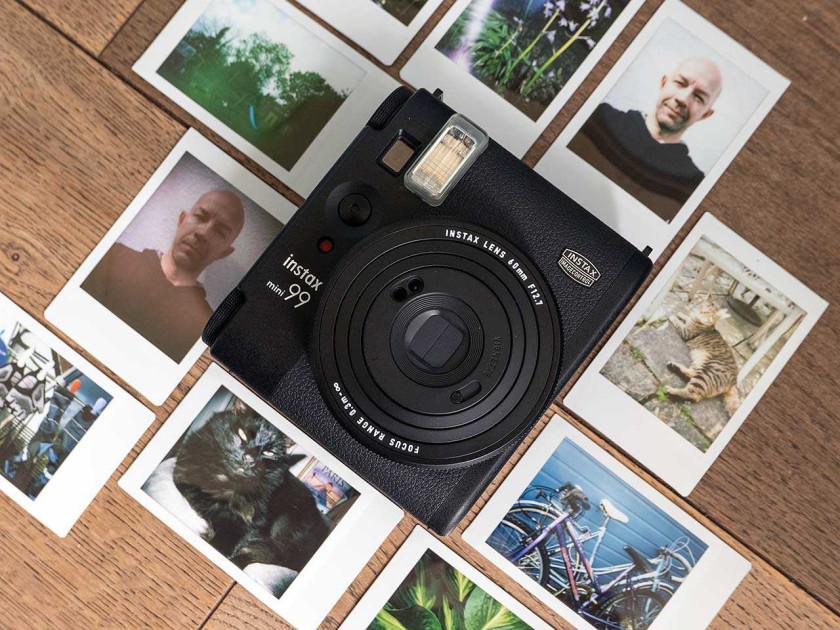
Introduction
Launched in March 2024, the Instax Mini 99 is Fujifilm’s most advanced model in its extensive range of instant photography cameras.
It “instantly” creates small 54x 86mm (2.1 x 3.4in) paper prints which emerge from the slot in the side of the camera and gradually fade into view 90 seconds after you first pressed the shutter button.
Designed for those who want more control than the purely point-and-shoot experience offered by the entry-level Mini 12, the Mini 99 offers a number of innovative features.
These include a brand new Colour Effect Dial on top of the camera which provides six unique effects via physical LED lights within the camera body. The effects are Faded Green, Warm Tone, Light Blue, Soft Magenta, Sepia and Light Leak.
There’s also a new Manual Vignette Switch on the front of the lens housing, allowing users to add artistic shaded frames to their images.
Other key features inherited from the previous 10-year-old Mini 90 model include Brightness Control with five levels from brightest to darkest, a range of Shooting Modes including Indoor, Sports, Double Exposure, and Bulb modes, and a Self-timer to help ensure perfect group shots.
The lens housing can be twisted to select one of three focus distances – Landscape (3m – infinity), Standard (0.6-3m) and Macro Focus (0.3-0.6m).
The Mini 99’s flash controls include Auto, Fill-in (flash will always fire regardless of lighting), Red-eye Removal, or the option to turn the flash off.
Maybe more importantly for this target market, Fujifilm have also refreshed the design of the Mini 99, with a classic and stylish matte black finish and a vintage retro design that recalls old-fashioned cameras from yesteryear, which is much more serious than the inflated bubble shape of the Mini 12.
The Fujifilm Instax Mini 99 comes in black only and costs £174.99 / $199.95 in the UK / USA respectively.
Also included in the box are a rechargeable battery (NP-70S), battery charger (BC-70C), shoulder strap, USB Type-C cable and a Base Grip Tripod Mount accessory that acts as a handy grip when unmounted.
It uses Fujifilm Instax Mini paper which comes in a cartridge containing 10 sheets. A single pack of 10 sheets typically costs around £8.99 / $7.99, but you can usually buy multi-packs for a lower cost per unit. For instance, a two pack is usually £14.99 / $13.99 each and a five pack of 10 sheets is anything from £34.99 / $34.99.
Ease of Use
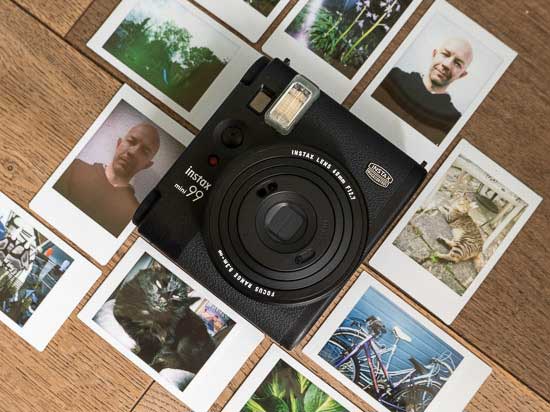 |
Despite being a serious instant film camera aimed at more advanced users, the Fujifilm Instax Mini 99 is thankfully very easy to initially setup. It also comes with a concise instruction manual to follow for a smooth experience.
To get started, you’ll need to load the camera with the rechargeable NP-70S Lithium Ion battery that is supplied in the box and, of course, the instant film. Battery life is around 100 shots, or 10 packs of film.
Before popping open the large rear door, you’ll need to turn the camera on by twisting the lens dial and check the LCD panel on the rear. If a number is displayed on the right (from 1-10), then there is film already loaded.
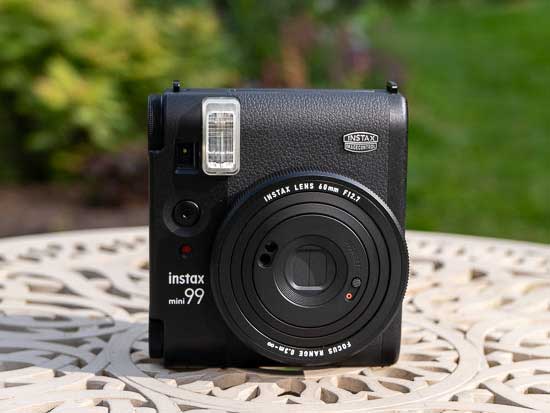 |
With the rear door open, the yellow mark on the film cartridge lines up with the one inside the camera. Slot in the cartridge and close the door. Simple.
Before you get started, you’ll need to take a shot to eject what is referred to as the safety sheet from the cartridge.
The print slot is found on the top of the Instax Mini Evo (when viewed from the rear in portrait orientation), so make sure it is unobstructed when you press the print button.
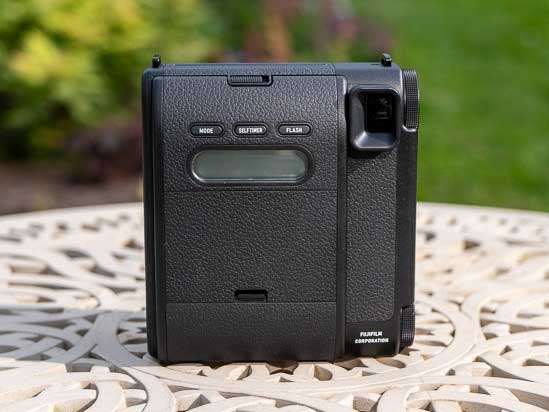 |
Once an image has been printed out, you’ll need to allow some time for the Instax film to develop – in other words, don’t be alarmed when it pops out completely white. After a few minutes, the colours should have fully rendered.
To turn the camera on, you simply twist the lens clockwise from the Off to one of the three zone focus positions – Landscape (3m – infinity), Standard (0.6-3m) and Macro Focus (0.3-0.6m).
You’ll notice that the lens is labelled with a 60mm focal length, which in this format translates to around 35mm – that’s a moderately wide angle of view that’s employed by all Fujifilm Instax cameras.
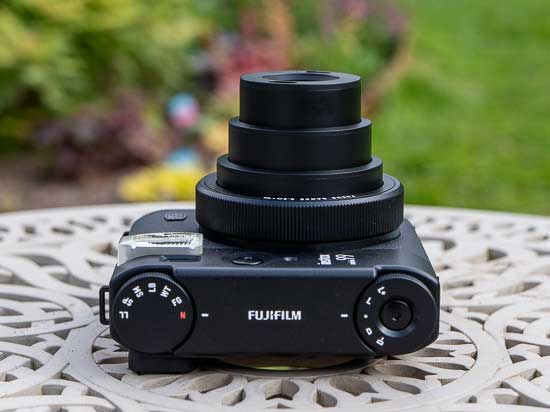 |
With a subject that’s around a metre away, you’ll be able to include a good amount of surroundings in the shot. For a selfie from around 0.4m, you can comfortably fit in two people, but if anyone else jumps in it’s a real squeeze.
Shots can be composed using the optical viewfinder, although you won’t want to rely on its accuracy too much, something that can be disconcerting for the first-time user. Also, you really have to press your eye in close in order to see through the finder in the first place.
Fujifilm have greatly improved the accuracy for close up subjects so that when you select Macro Focus, your main subject will be right in the center of the frame, rather than off to one side as on some previous models.
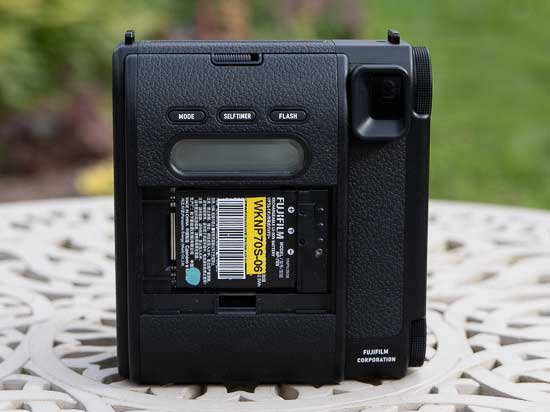 |
The Instax Mini 99 is primarily designed to be used in portrait format with the built-in flash at the top. Landscape format is more accommodating on this model as Fujifilm have added a second shutter release button on the side to be used in this orientation.
For the most accurate framing, the ‘O’ seen in the middle through the viewfinder should be positioned slightly up and to the right of centre to your subject. If you switch to landscape format with the flash still on top, then the ‘O’ should be slightly to the upper left of centre.
Guidance regarding composition can be found in the instruction manual – it’s possibly the most tricky aspect of any Instax camera to consciously remember.
 |
The Instax Mini 99 measures 103.5 mm x 117.5 mm x 60 mm and weighs 340g without battery, strap, and film.
The camera is made from plastic, so ideally you won’t want to drop it from any great height, but it is robust enough if you do.
Size-wise, the Instax Mini 99 fits in the hand comfortably enough – for reference, I have large hands. It has a much more angular design than the smooth curves of the Mini 12, and it also has a usefully textured surface.
 |
It mimics the look of classic film cameras pretty well, with the faux leatherette coating both looking genuine from afar and also making it easier to grip than the smooth, shiny surface on the Mini 12. The textured coating is made from plastic, though, not true leather.
On the side of the Mini 99 are two circular dials. The first allows you to choose one of the six available Color Effect settings (Faded Green, Warm Tone, Light Blue, Soft Magenta, Sepia and Light Leak), or the N (normal) setting to render things as they are.
These colour effects are applied via physical LED lights within the camera body, located underneath the film compartment, which illuminate during the exposure to add the colour effect.
 |
The second dial acts as exposure compensation, offering five levels of adjustable brightness, including Light +, Light, Normal, Dark and Dark-. In the middle of this dial is the second shutter release button.
On the rear of the Mini 99 are three small buttons – Mode, Self Timer and Flash.
The first accesses the five shooting modes, including Normal, Indoor, Sports, Double Exposure, and Bulb, which optimize the camera for a specific scene.
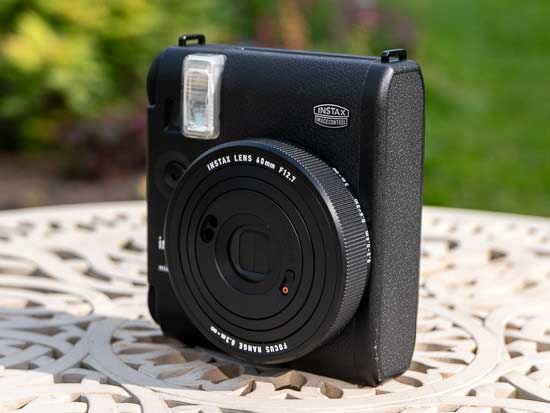 |
The Normal mode automatically adjusts the flash and shutter speed to capture the perfect level of brightness. The Indoor mode uses slower shutter speeds to help brighten interiors. The Sports mode uses faster shutter speeds to help freeze the action. The Double Exposure mode takes two individual shots and superimposes them into one photo. The Bulb mode keeps the shutter open for up to 10 seconds – note that you need to keep the shutter button pressed.
The built-in self timer is useful for subjects like group shots. It’s ten seconds long and activates a light on the front of the camera which blinks for the final three seconds.
Unlike the Mini 12 which fires the flash for every shot, regardless of whether it’s really needed or not, the more sophisticated Mini 99 offers Fill-in flash, Red-eye removal, Automatic Flash or Flash off options.
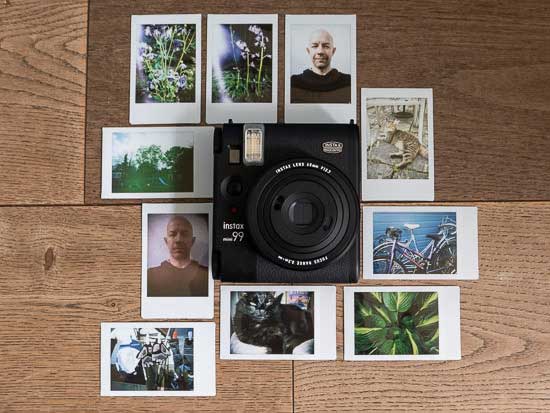 |
Almost hidden away from view, the new Manual Vignette Switch is a clever addition to the Mini 99 that we’ve not previously seen on an Instax camera.
Located on the front of the lens housing, this small switch narrows the lens aperture, thereby applying a vignetting effect to the corners of the print. Turning it off captures all available light for a more natural shot.
Completing the external controls are a 1/4″ tripod socket, which as with most of the user interface is optimally positioned for when the Instax Mini 99 is in portrait mode.
Image Quality

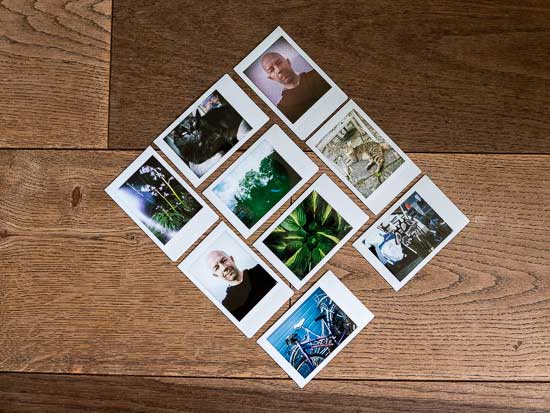
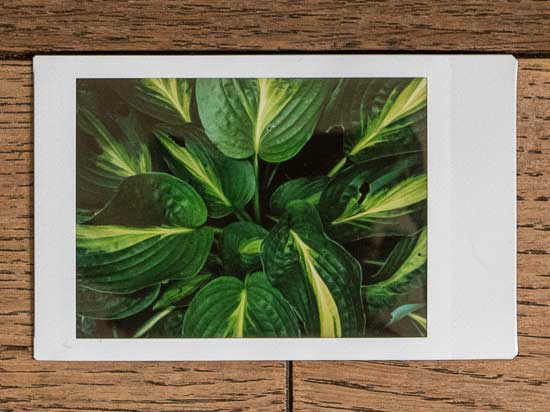
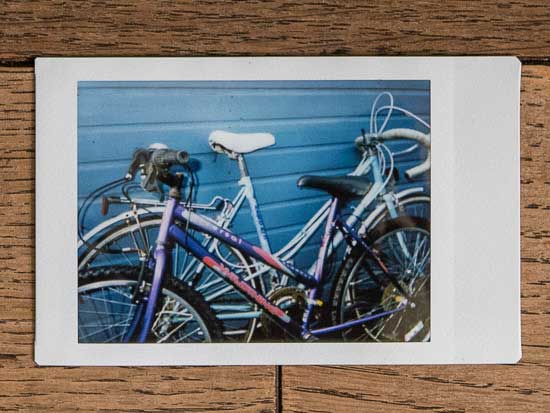
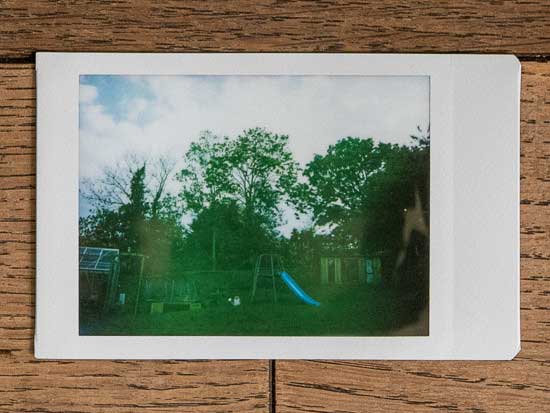
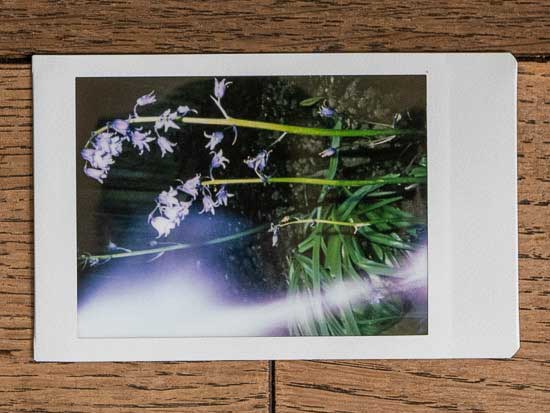
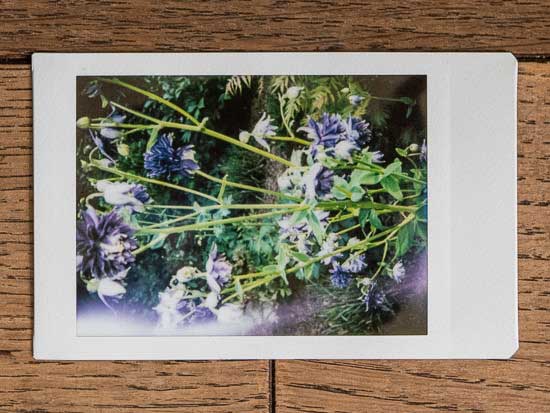
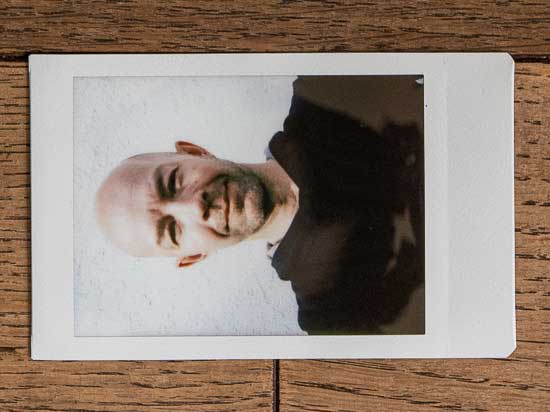
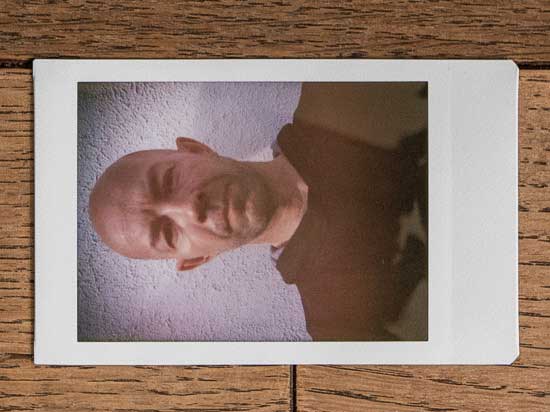
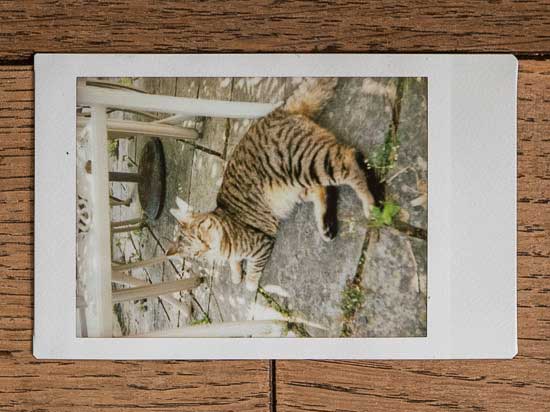
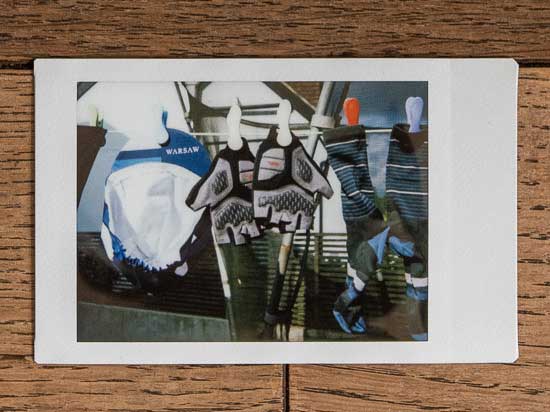
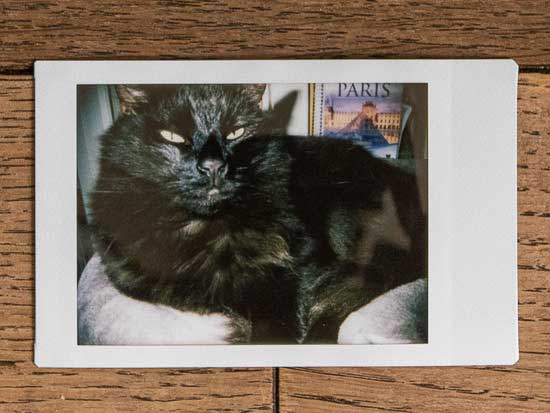
Product Images

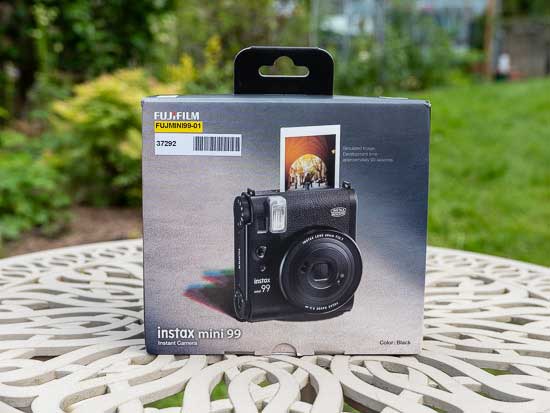
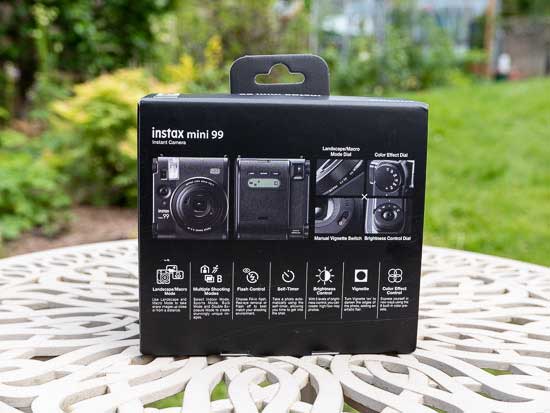
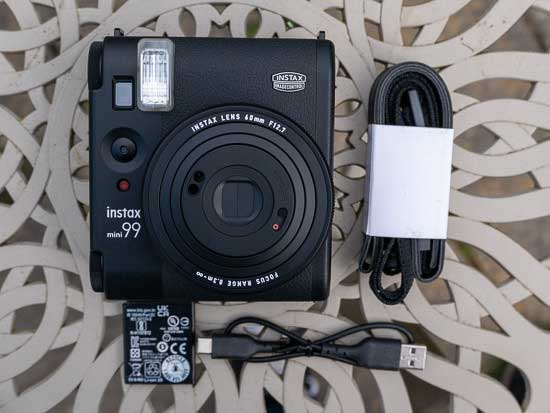




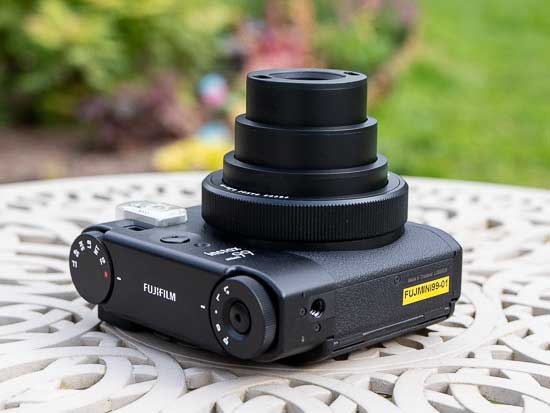
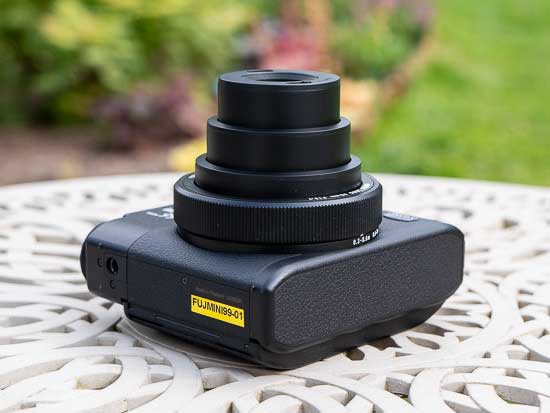
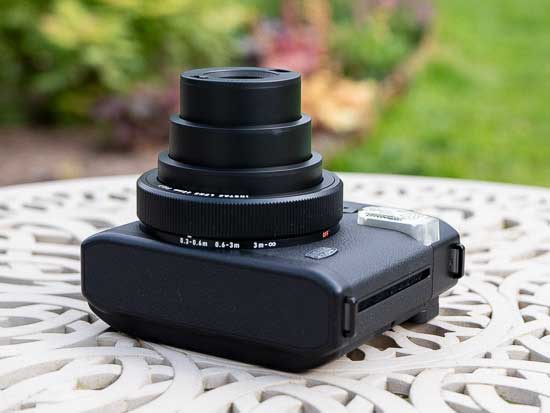
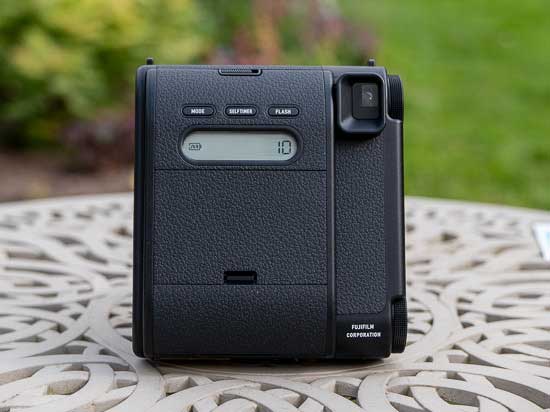

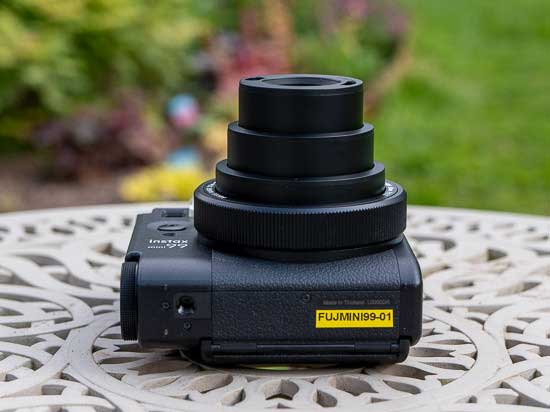
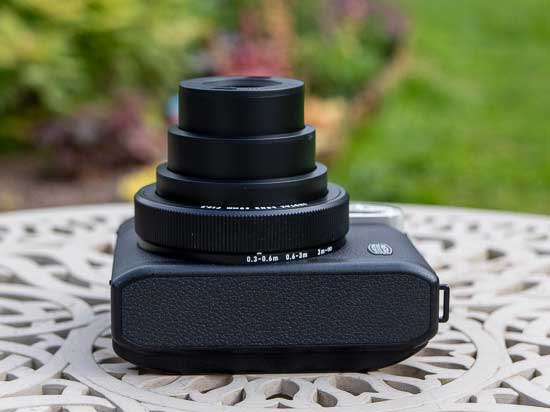
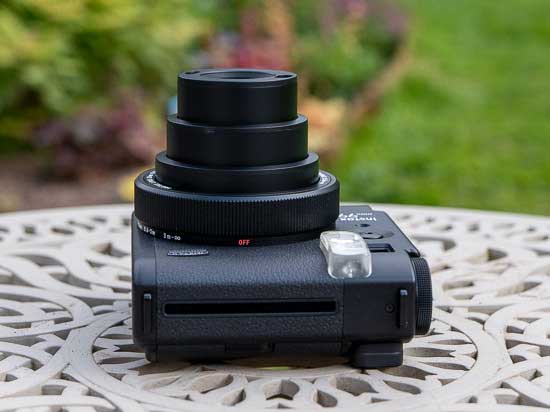


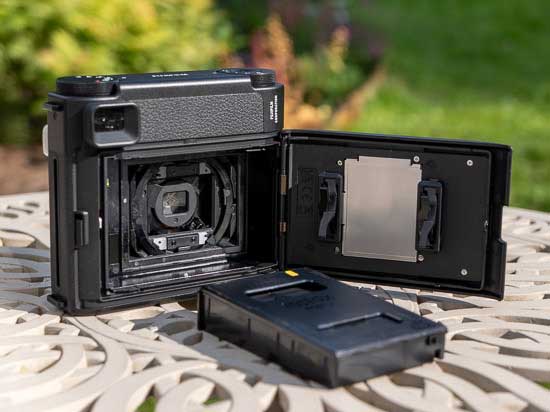

Conclusion
The Instax Mini 99 is Fujifilm’s most sophisticated and most creative analog camera to date, offering a winning blend of control and fun via an intuitive user interface.
Loosely based on the now 10-year-old Instax Mini 90 Neo Classic model that was launched way back in 2013, the new Mini 99 principally adds more control over exposure and the innovative colour and vignetting effects.
Both of these have only previously been available on Fujifilm’s digital Instax cameras – now they’ve very cleverly been integrated into a fully-analog model, especially in the case of the LED-driven colour effects which is an engineering stroke of genius.
What you don’t get on the Mini 99 that you do enjoy on the digital models is accurate composition – as with all of their optical viewfinders, the one on the Mini 99 only offers a rough approximation of what will actually be captured on print, which takes some getting used to if you’re new to Instax.
This is all part of the charm and above all fun of Instax cameras, though, and Fujifilm have certainly amped that feeling up on the Mini 99. It might be the most capable model in the range, but it’s crucially still a lot of fun to use, with so many effects and controls on offer that it’s all-too-easy to forget to take a “straight” picture.
The Instax Mini 99 is almost double the price of the entry-level Mini 12, which is a capable model that delivers good results in most common shooting situations. We’d still recommend the cheaper alternative for more casual users.
If you’ve ever wanted more control from an analog instant camera, though, the Mini 99 is hard to beat, especially as it doesn’t forget to be Fun with a capital F!
| Ratings (out of 5) | |
|---|---|
| Design | 5 |
| Features | 5 |
| Ease-of-use | 4.5 |
| Image quality | 5 |
| Value for money | 4 |
Main Rivals
Listed below are some of the rivals of the Fujifilm Instax Mini 99.
The Instax Mini 11 is Fujifilm’s new entry-point into the exciting world of instant film photography. Now featuring auto exposure and a built-in ‘selfie’ lens setting, is this the best instant camera for beginners? Read our in-depth Fujifilm Instax Mini 11 review to find out…

The Instax Mini 12 is Fujifilm’s new entry-level instant film camera for beginners Now featuring automatic flash control, a close-up mode with parallax correction and a refreshed bubble design, is this the best introduction to the world of instant photography? Read our Fujifilm Instax Mini 12 review to find out…

The Instax Mini 40 is a classic, retro-inspired entry-point into the world of instant film photography. Featuring auto-exposure and a built-in ‘selfie’ lens setting, is it worth the asking price of $99 / £89? Read our in-depth Fujifilm Instax Mini 40 review to find out…

The new Fujifilm Instax Mini Evo combines a digital camera with an Instax printer to enable you to take photos and make instant prints from the same device. It also offers the ability to print images from your smartphone onto the Instax Mini film. Read our in-depth Fujifilm Instax Mini Evo review, complete with downloadable sample images, to find out if it’s worth the £174.99 / S199.99 asking price…

The new Fujifilm Instax Mini LiPlay pairs a digital camera with an Instax mini printer to enable you to take photos and make instant prints. It also offers the ability to record sound clips for the first time on an Instax. Read our in-depth Fujifilm Instax Mini LiPlay review, complete with downloadable sample images, to find out if this is the best ever Instax device…

The Fujifilm Instax Square SQ1 is the latest instant camera to use the square Instax film format. Simpler to use and more stylish than the SQ6, is this the best square-format instant camera on the market? Find out now by reading our Instax SQ1 review…

The Fujifilm Instax Square SQ20 is a hybrid instant camera that takes digital pictures and makes instant prints. Does it offer the best of both the digital and analog worlds? Read our in-depth Fujifilm Instax Square SQ20 review to find out…

The Instax Square SQ6 is Fujifilm’s first ever camera to use the square Instax film format. Is it better than its main rival, the Lomo’Instant Square? Find out now by reading our Instax Square SQ6 review…

The new Lomo’Instant Square is a fully automatic instant camera that’s the first ever analog model to use the square Instax film format. You can also use Instax Mini film by changing the camera back, increasing its versatility. Is this the best instant camera on the market? Find out by reading our Lomo’Instant Square review now…
Review Roundup
Reviews of the Fujifilm Instax Mini 99 from around the web.
The instax mini 99 becomes the most advanced and creative analogue camera in Fujifilm’s series to date. It may inherit a great deal from the discontinued mini 90, but adds some genuinely new and innovative features, most notably the vignette and colour effects, applied by a physical iris and internal LEDs respectively.
Read the full review »
The Instax Mini 99 takes Fujifilm’s instant cameras to new creative heights, offering the most advanced controls yet for fine-tuning images, but also the most ways to have fun with any Instax camera so far. Where LED light effects could have been gimmicky and tacky, they add a new creative element that I couldn’t stop playing with.
Read the full review »
The Fujifilm Instax Mini 99 instant film camera supports color filter effects, offers several useful capture modes, and allows for finer exposure control than one-button alternatives.
Read the full review »
Simply put, this is the single most beautiful Instax camera Fujifilm has ever made. The camera surely has an aesthetic that will appeal to a wide crowd. It doesn’t look as much like a classic camera as the Mini 90 does — but it still has some retro-styling to it in the form of the dials.
Read the full review »
Specifications
Film
- Film – Fujifilm Instant Colour Film “instax mini” (separately available)
- Film size – 86mm x 54mm Picture Size 62mm x 46mm
- Film developing time – Approximately 90 seconds (Varies depending on the ambient temperature)
Viewfinder
- Real image finder, 0.37x, with target spot
- Parallax correction function for Macro Mode
Lens
- Retractable lens, 2 components, 2 elements
- Focal length – f = 60 mm, 1:12.7
- Shooting range – macro mode (0.3m to 0.6m), standard mode (0.6m to 3.0m), landscape mode (3.0m to infinity)
Exposure
- Programmed electronic shutter – 1.8 to 1/400 seconds
- Bulb Mode (opening time max. 10 seconds)
- Exposure control – Automatic
Flash
- Automatic flash (automatic light adjustment)
- Charging time – 6.5 seconds or less (when using new batteries)
- Effective flash range – 0.3 m to 2.7 m
Self-timer
LCD Screen
- LCD shooting mode indicator and film counter display
Shooting Modes
- Auto Mode, Indoor Mode, Sports Mode, Double Exposure Mode, Bulb Mode
Creative Options
- Colour effects – Faded Green, Warm Tone, Light Blue, Soft Magenta, Sepia, Light Leak
- Vignette Mode
Battery Specs
- Battery – 1x NP-70S
- Charging time – approximately 1 to 2 hours (charging time depends on the temperature)
- Printing capacity – approximately 100 (the number of prints depends on the usage conditions)
Dimensions
- 103.5 mm × 117.5 mm × 60 mm (excluding protrusions)
- 340 g (without batteries, strap, and film)
Accessories
- Shoulder strap
- Rechargeable battery NP-70S
- Battery charger BC-70C
- USB Type-C cable
- Base grip with tripod mount
Your Comments
Credit : Source Post






